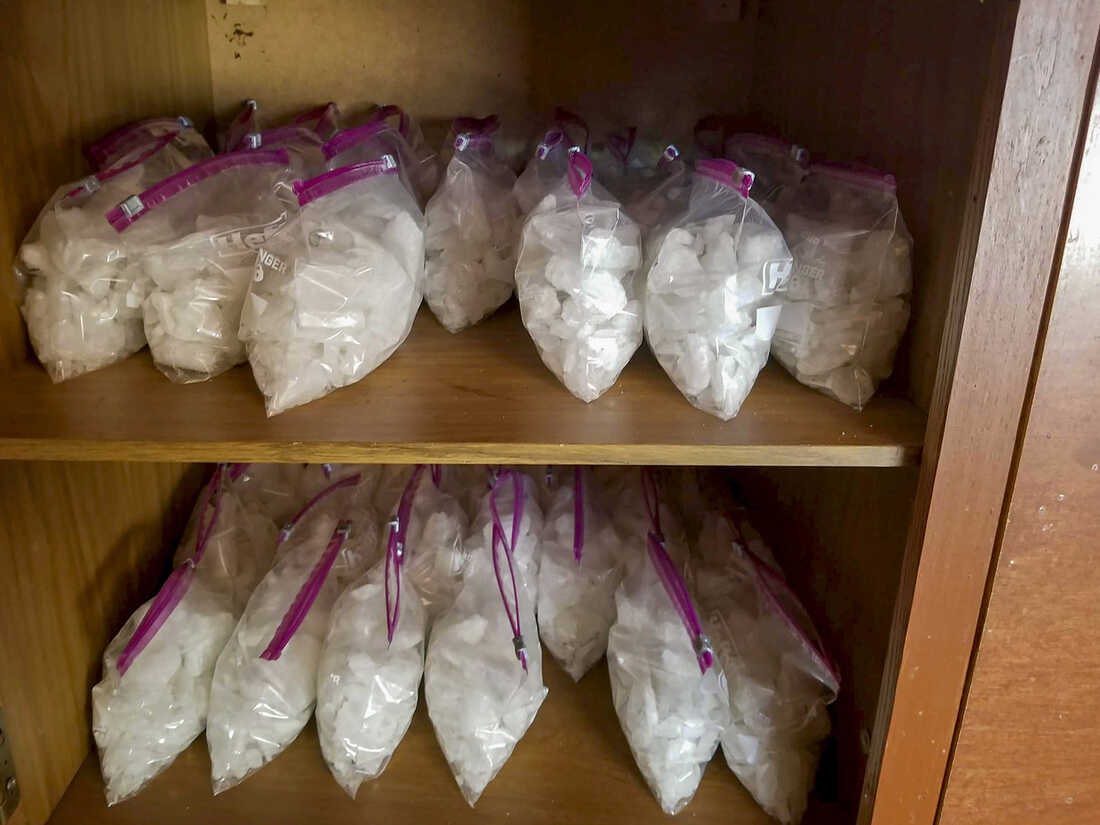From NPR, by Brian Mann, 09/22/21
When Winnie White Tail convened a new session of inpatient substance use treatment last month for members of the Arapaho and Cheyenne tribes, she found that roughly half her clients were struggling with methamphetamine addiction.
“It’s readily available, it’s easy to get,” White Tail says. She’s a Cheyenne tribal member herself and runs the George Hawkins Memorial Treatment Center in Clinton, Okla.
“I believe it’s deeply entrenched across the community — not just in Native communities,” she tells NPR.
A study published Wednesday in the journal JAMA Psychiatry suggests methamphetamine use is surging as a major cause of high-risk addiction and overdose death in the U.S.
From 2015 to 2019, the number of deaths linked to methamphetamine use rose from 5,526 a year to 15,489 a year — roughly a 180% increase.
The researchers found Native Americans and Alaska Natives still have the highest rate of methamphetamine use disorder and have seen sharp increases in drug deaths in recent years.
“In terms of absolute numbers, the group that’s most negatively affected by methamphetamines are American Indians and Alaska Natives and the difference is gigantic,” says Dr. Nora Volkow, head of the National Institute on Drug Abuse, who co-authored the study.

How fentanyl makes meth’s devastation even worse
Methamphetamines are increasingly deadly because much of the supply of the stimulant sold on the street is contaminated with the potent synthetic opioid fentanyl.
Volkov says use of the drug has also spread rapidly into communities where it was once considered rare. Black Americans saw a tenfold increase in methamphetamine use over the same five-year period.
Dr. Stephen Taylor, a psychiatrist and Fellow with the American Society of Addiction Medicine, says the nation’s focus on the opioid crisis — with its devastating impact on white, rural communities — distracted attention and resources away from the deadly spread of methamphetamines in communities of color.
“Those communities have been confronting a massive increase in addictions to and overdose deaths from methamphetamine for a long time,” Taylor says, noting that this study adds new detail of the magnitude of the increase.
The data also suggest a surge in high-risk behaviors linked to methamphetamines across all demographics, including among women.
Researchers found a higher frequency of use, an increased use of needles to inject the drug and a higher incidence of combining methamphetamines with other drugs, such as the powerful synthetic opioid fentanyl.
Another worrisome trend, the scientists note, is the rapid transition of casual and recreational methamphetamine use into full-blown addiction for many people. “That, of course, puts you at much higher risk of dangerous practices,” Volkow says.
It’s not just a pre-pandemic trend
All the data included in this study was collected before the pandemic.
But Volkov notes that preliminary information collected by the Centers for Disease Control and Prevention in 2020 points to another more recent spike in methamphetamine-related overdose deaths.
“So this is huge and it’s basically almost the equivalent to the increase of overdose deaths we’re seeing for fentanyl and other synthetic opioids,” she says.
According to the latest estimates from the CDC, roughly 96,000 Americans died from drug overdoses over the most recent 12-month period from which data is available.
Roughly 15% to 20% of those fatalities appear to involve methamphetamines, often contaminated with fentanyl.
As NPR has reported, efforts to target cartels that are producing fentanyl and methamphetamines inside Mexico (which are later smuggled into the U.S.) have largely unraveled.
Researchers say the findings published Wednesday point to an urgent need for more research into methamphetamine treatment and more funding for high-quality programs to help people with methamphetamine use disorder.
